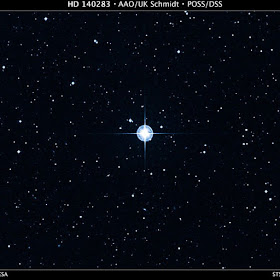PSI Blog 20190807
Anti-Kuhn paradigm
Thomas Kuhn generally is
a hero among dissidents. Along with his explication of what it all meant, his
invention of the word “paradigm” was his greatest achievement. A
paradigm forms the body of data, assumptions, and interpretations guiding a
discipline during a particular period. A paradigm cannot be overthrown by anyone
whose livelihood depends on it—only outsiders need apply for that infrequent
function.
Here is an interesting
interview “Thomas Kuhn
Threw an Ashtray at Me”
with Errol Morris, who was kicked
out of Princeton by Kuhn to go on to become a famous documentary film maker (The
Fog of War) and writer of a new book critical of Kuhn (The Ashtray).
Although
he tends to throw the baby out with the bath water, I tend to agree with Morris’s
major criticisms. In particular, that Kuhn erroneously assumes:
1. There is no objective truth. Truth
is determined by subjects, not by nature.
2. Science is not progressive. The
same data are interpreted differently at various times.
3. There may be no such thing as
reality.
Morris puts it this way:
“The truth is central to the
human enterprise. What stuck in my craw was Kuhn’s underlying belief that there
was no such thing as truth, perhaps no such thing as reality, no such thing as
progress. It struck me then, and still strikes me now, as a postmodern and
pernicious idea.”
Remember Kuhn’s great work was first published in 1962, although not
much changed in the 50 years subsequent.[1] Like
most “philosophers of science” he was actually a “historian of science.” That
occupation is to report on what scientists think and have thought, not what
they should think as we do in “scientific philosophy.” He had studied
the Copernican Revolution[2] in
which the math worked pretty much as well as in the geocentric Ptolemaic system.
Like our current struggle to get rid of the Big Bang Theory, it was all a
matter of perspective and interpretation that would ruffle the fewest feathers
among the ruling class. As Bruno and Galileo found out, the ruling class in
1600 was the church.
As scientists, we must adamantly oppose Kuhn’s idea that there is no
objective truth, while agreeing that interpretations vary. Kuhn was confused
because the Einsteinian regression in physics had confused most everyone. Kuhn’s
second point that there was no progress in science did not seem otherwise at
the time. Eventually, physicists might give up their obeisance to math and come
to their interpretive senses as they did with Copernicus. The cyclic theory of
history surely would prevail. Truth would once again be whatever people thought
it should be, just as the postmodernists were beginning to claim in the late
50s.
Is there progress in science? Is there human progress at all? Of course
a regressive period tends to produce pessimism aplenty. In this postmodern-prerevolutionary
age any demonstration of progress[3]
reaches a public made sceptical by
incessant news of humanity’s failure to provide the promised nirvana. Still,
progress is spiralic—three steps forward, two steps backward.
This particular regression will not be without end.
Kuhn’s ambivalence about the existence of reality fits with the
immaterialism you can find in most any reading of quantum mechanics or
relativity. Whether its action-at-a-distance, immaterial fields, or immaterial
attraction, all fit with the religious milieu most of us grew up with. The soul of regressive physics at least
requires matterless motion for its sustenance. Maybe we shouldn’t be so hard on
Kuhn for, like the rest of us, he was a product of the times. His ground-breaking
observations concerning paradigms are useful nevertheless.
[1] Kuhn, T.S., 1962, The
structure of scientific revolutions: Chicago, The University of Chicago Press, 210 p.; Kuhn,
Thomas S. , and Hacking, Ian, 2012, The structure of scientific revolutions:
Chicago; London, The University of Chicago Press, 264 p.
[2] Kuhn, T.S., 1957, The
Copernican revolution: Planetary astronomy in the development of Western
thought: New York, Random House, 297 p.
[3] Pinker, Steven, 2011,
The Better Angels of Our Nature: Why Violence Has Declined: New York, Viking
[http://stevenpinker.com/publications/better-angels-our-nature]; Pinker,
Steven, 2018, Enlightenment now: The case for reason, science, humanism, and
progress: New York, New York, Viking, an imprint of Penguin Random House LLC,
556 p.


